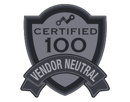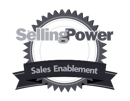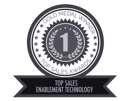sales coaching
Dave Brock on the Most Overlooked Opportunity in Sales Performance
The sales profession is in trouble. The latest CSO Insights report shows that sales effectiveness has declined yet again this past year. Inside many companies, sales teams struggle to meet their quotas, and sales leaders and executives struggle to give their teams the tools, systems, and training they need.
The Only Two Reasons Why Salespeople Fail and What to Do About Them
This may sound simplistic, but there are really only two reasons why salespeople aren’t successful:
This is How Sales Managers Should Coach Their Salespeople
Sales Management must spend 50% of their time coaching salespeople. Here's a coaching example for you.
How To Cure 3 Pervasive Sales Management Ills
Are you overwhelmed by an incessant barrage of questions from your sales team? Frustrated because they aren’t doing the things you did automatically as a salesperson? Perhaps you are exhausted from hounding them about meeting their obligations.
Back To Basics!
There are thousands of posts, hundreds of books that examine every nuance of sales enablement and performance management. Billions are spent in advanced or specialized sales training programs or sales enablement tools.
Learn from the Best, Move the Middle, Recycle the Rest
According to Sales Benchmark Index, across the industry as a whole, 83% of sales revenues are generated by only 13% of the sales population. And even if the asymmetry within your own sales organisation is less pronounced, it’s a reasonably safe assumption that there is some sort of significant imbalance between the best and the rest.
External Exposure
Podcasts
- Tony Morris interviews George Brontén on the podcast "Confessions of a serial seller"
- Deadly Assumptions that are Killing your B2B Sales - Outside Sales Talk with George Brontén
- SaaS-Story in the Making: Designing a Buyer-focused Sales Process - with George Brontén
- Tibor Shanto, Sales Scrum, interviews George Brontén
- Andy Paul, Sales Enablement: Stop Killing Deals, with George Brontén
- Jonathan Farrington interviews George Brontén about Stop Killing Deals [the book]
- Sales Futurists: The Future of Professional Selling - What Will the New "Normal" Be Like?
- Sales Pipeline Radio: You’re Killing Sales Deals Without Knowing It: George Will Help You Fix It
- Penta Marketing Interviews George Bronten in the Podcast Emerging Stronger™
- Integrity Solutions: Unmasking and defeating deadly assumptions that plague sales organizations
Videos & interviews
- The Top 5 Ways You are Killing Your Sales - Brutal Truth Sales Podcast
- Phil Gerbyshak interviews George Brontén about the Stop Killing Deals book release
- Membrain's Founding Story
- Sales Tools - the Good, the Bad, and the Ugly
- Here's what to consider when adding or switching your CRM
- Productivity, efficiency, effectiveness – what’s what and where to focus?
- How to Build a Sales Process That Drives Successful Behaviors
- Can Checklists Stop Deals from Dying and Help Consistently Achieve Quota?
Guest Posts
- G2Crowd: "How to Get the Most out of Your Sales Technology Investment"
- Saleslounge: Varför dina stjärnsäljare blir dåliga säljchefer
- Saleslounge: Vad är komplex försäljning?
- Vainu: Så blir du en mästare på komplex B2B-försäljning
- CSO Insights: Sales Process Interview, Part 2
- CSO Insights: Sales Process Interview, Part 1
- Richardson: 3 Pitfalls that Still Make Sales Teams Waste Time and Lower Sales Effectiveness
- Smart Selling Tools: How to Stop Fighting the Monster of Sales Technology Complexity









